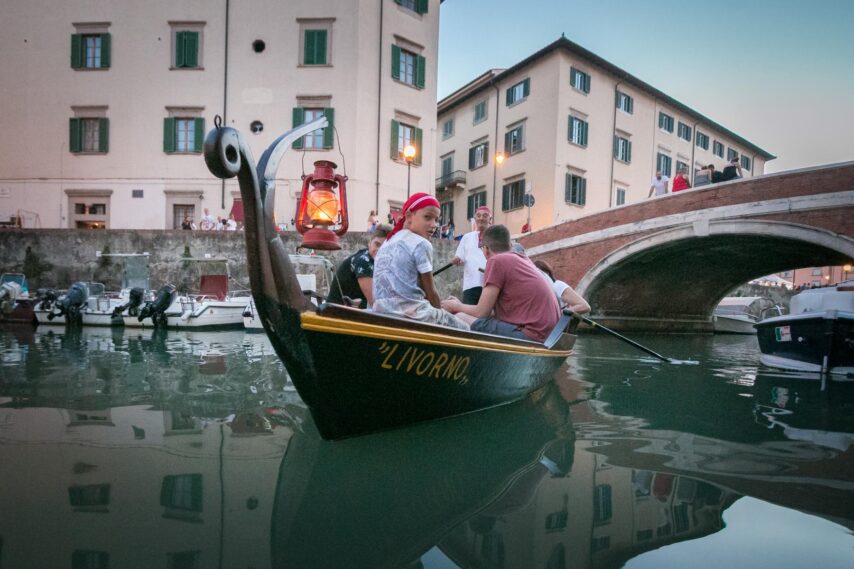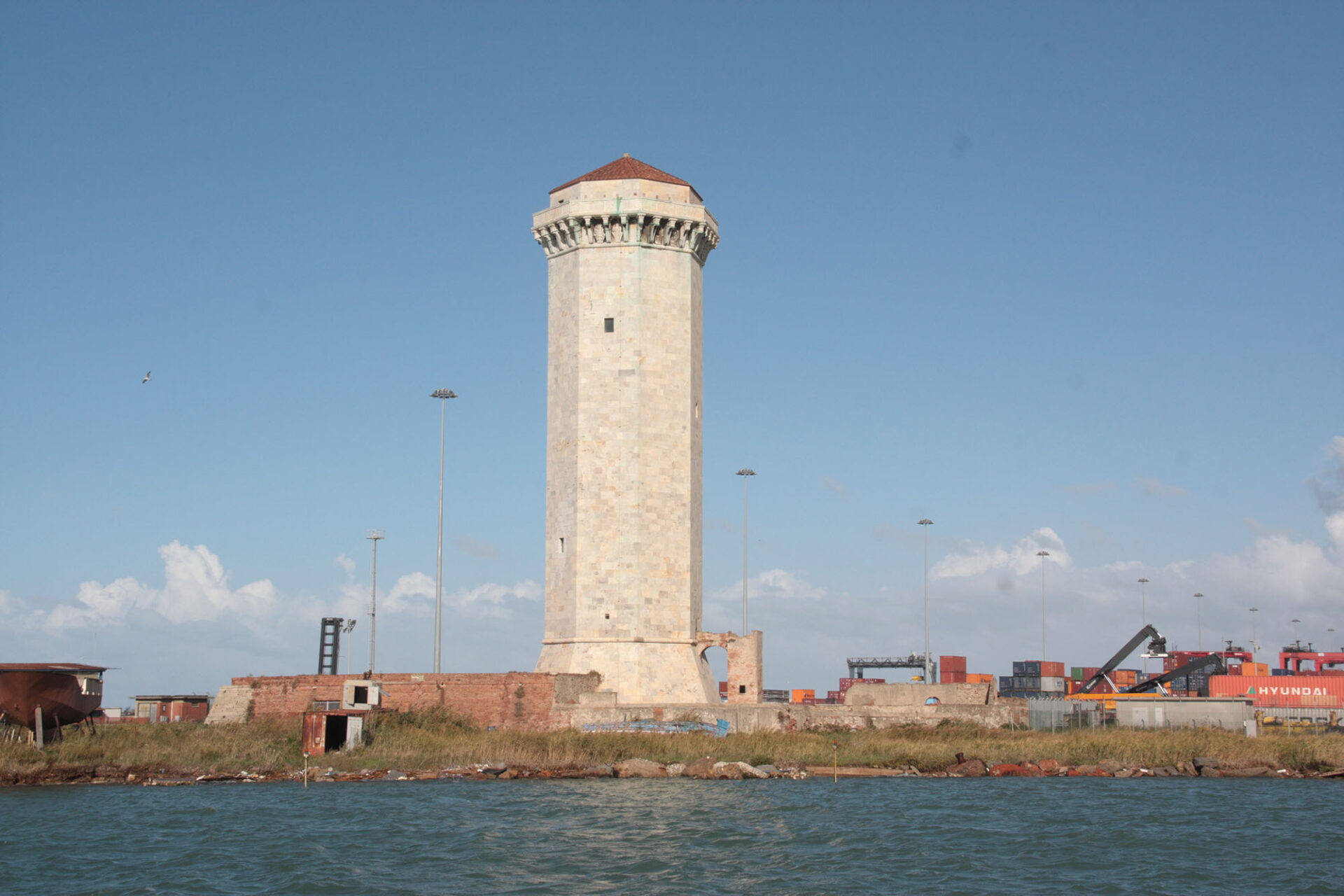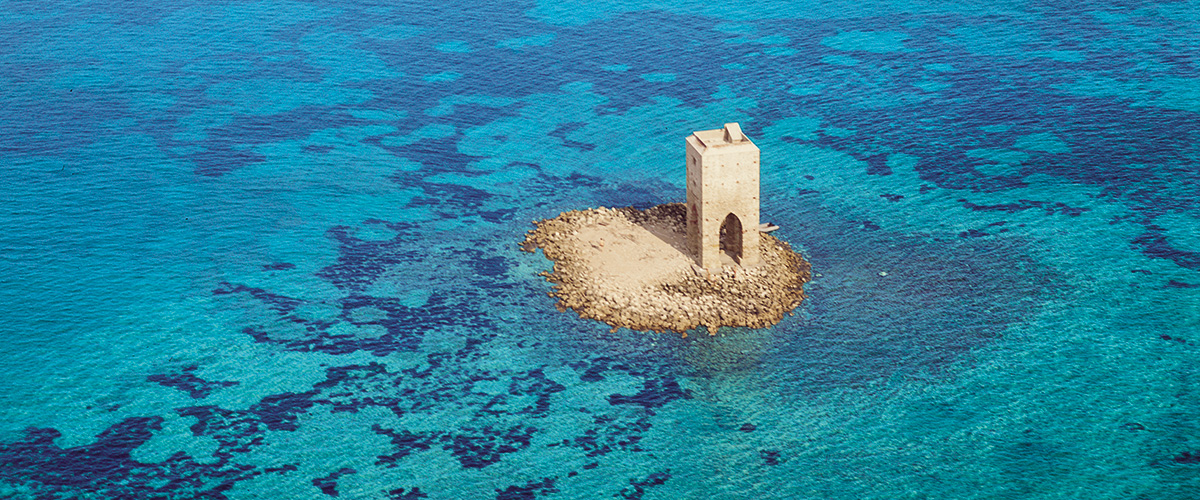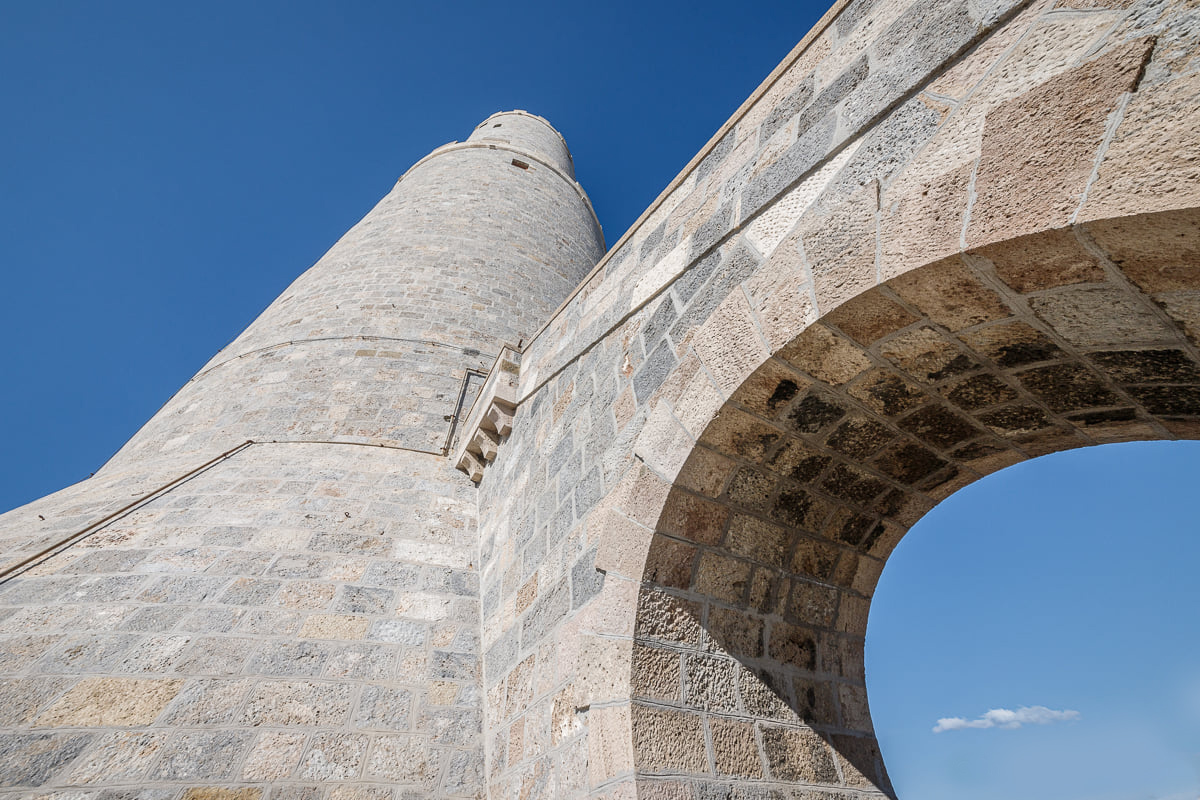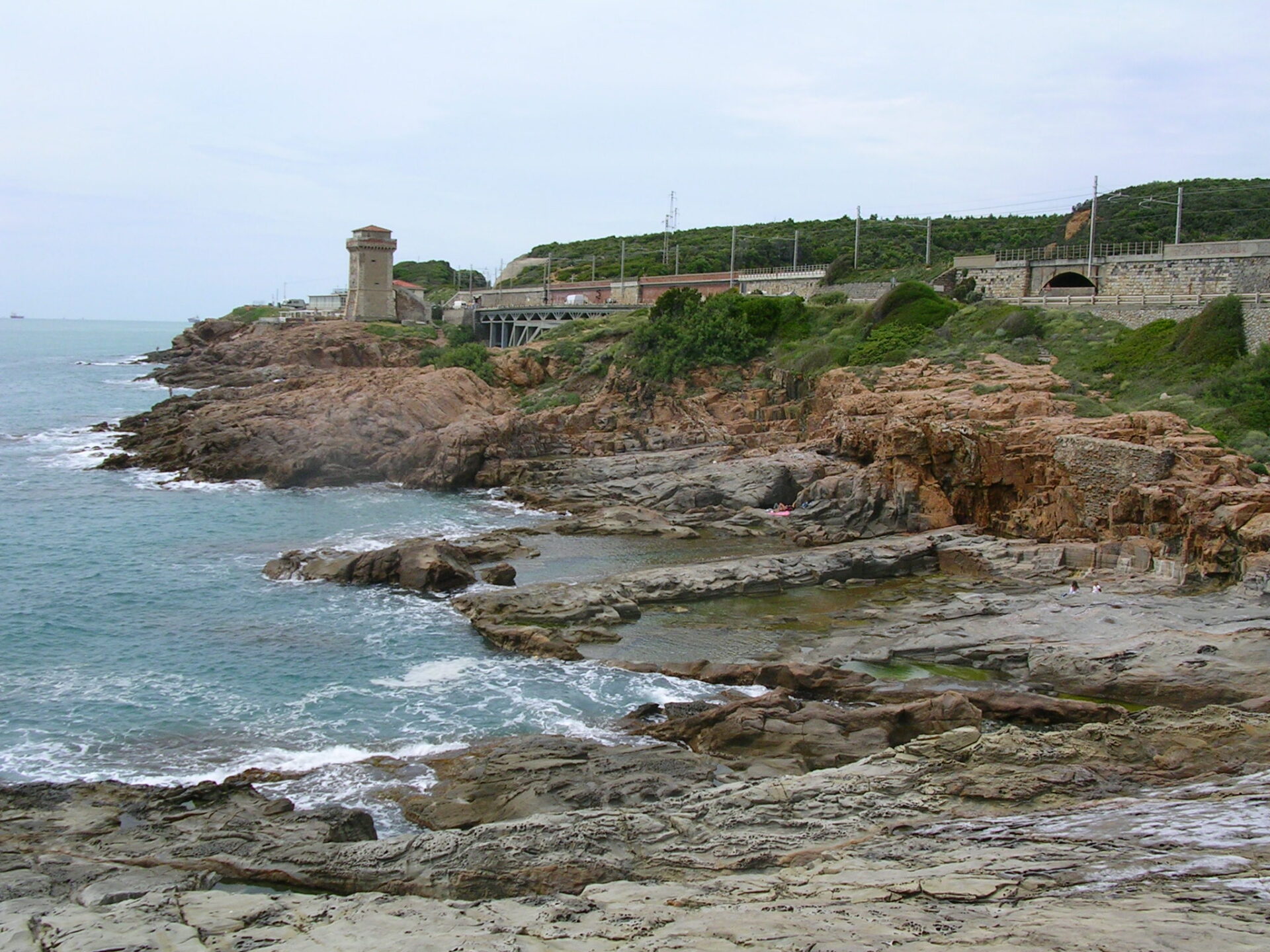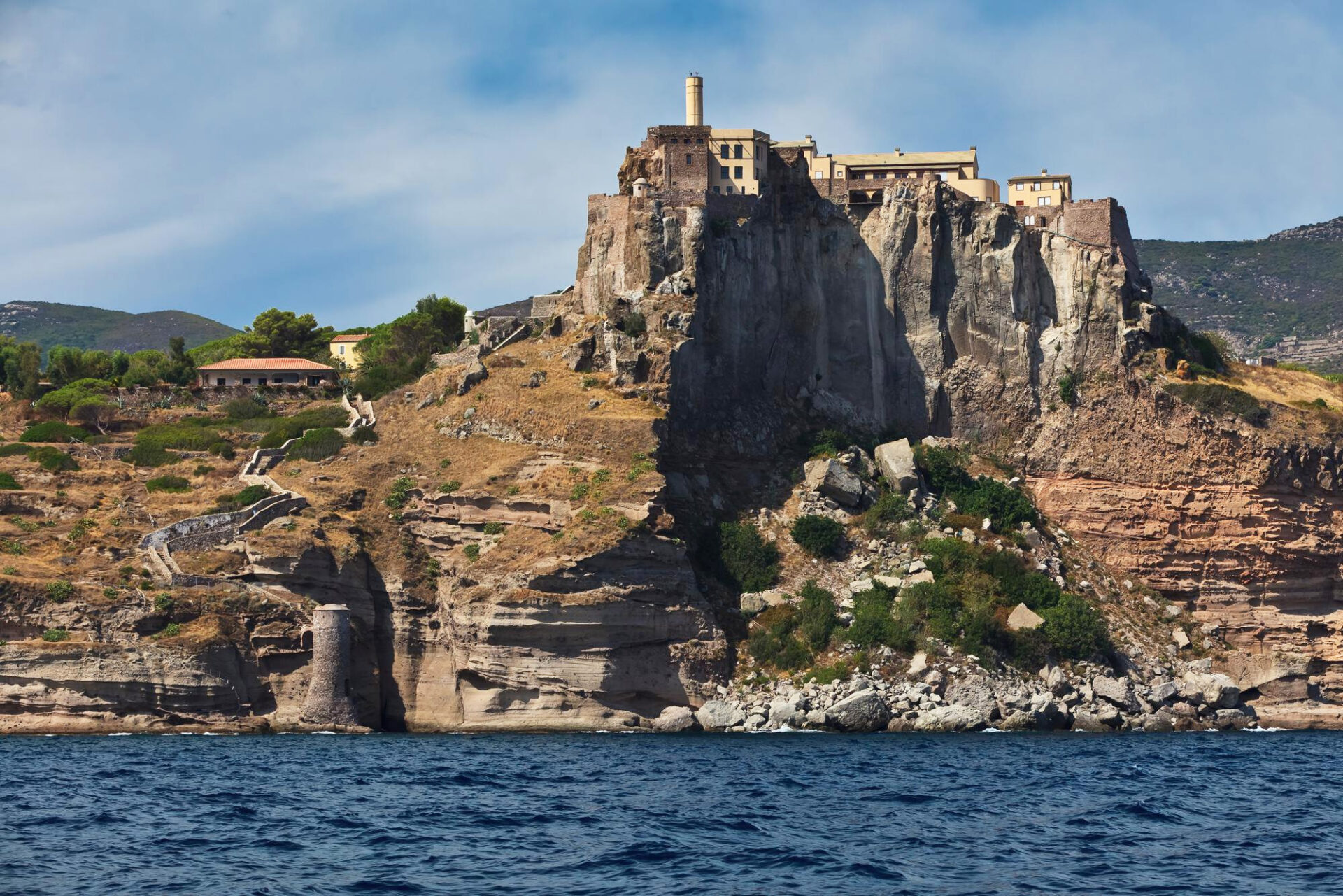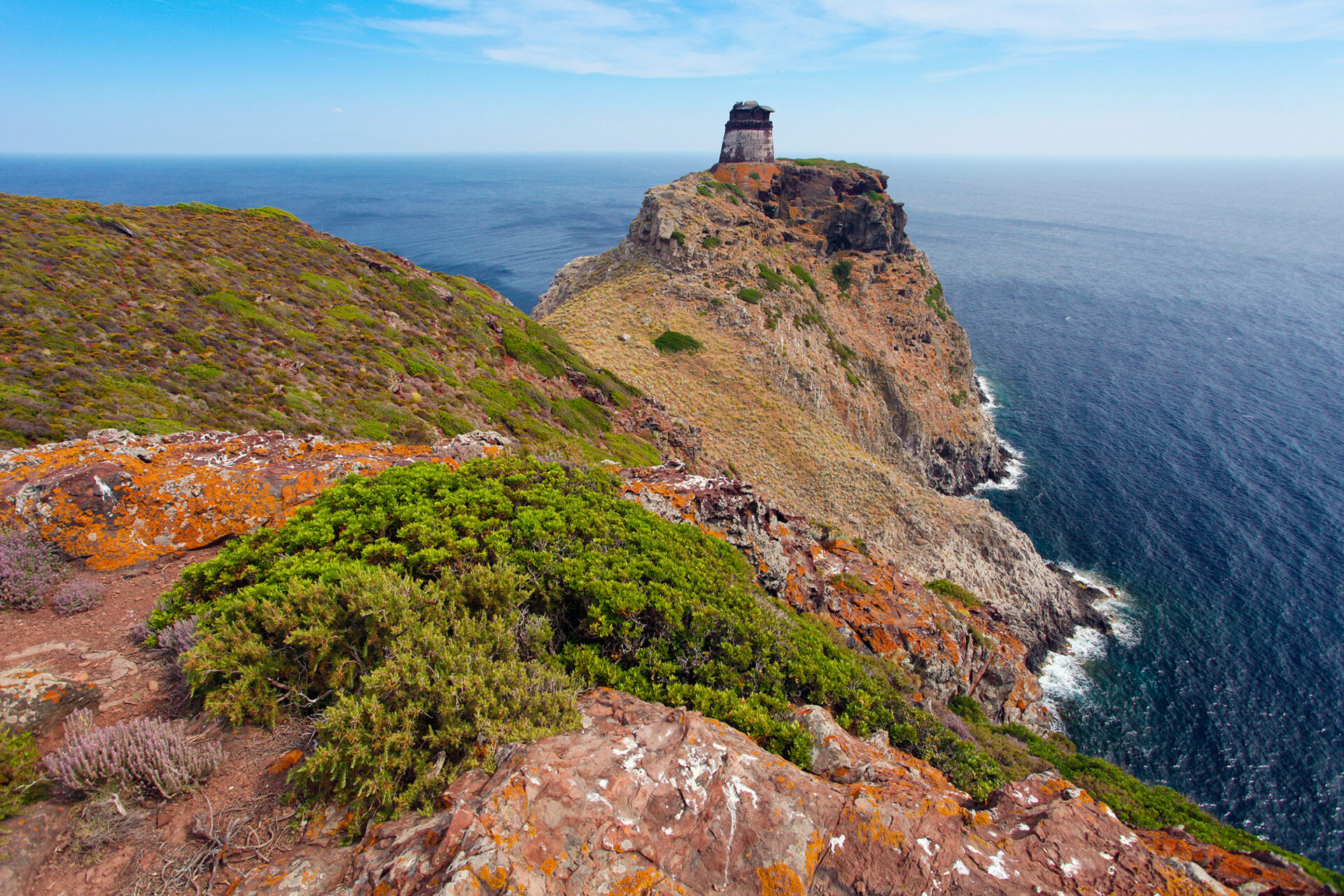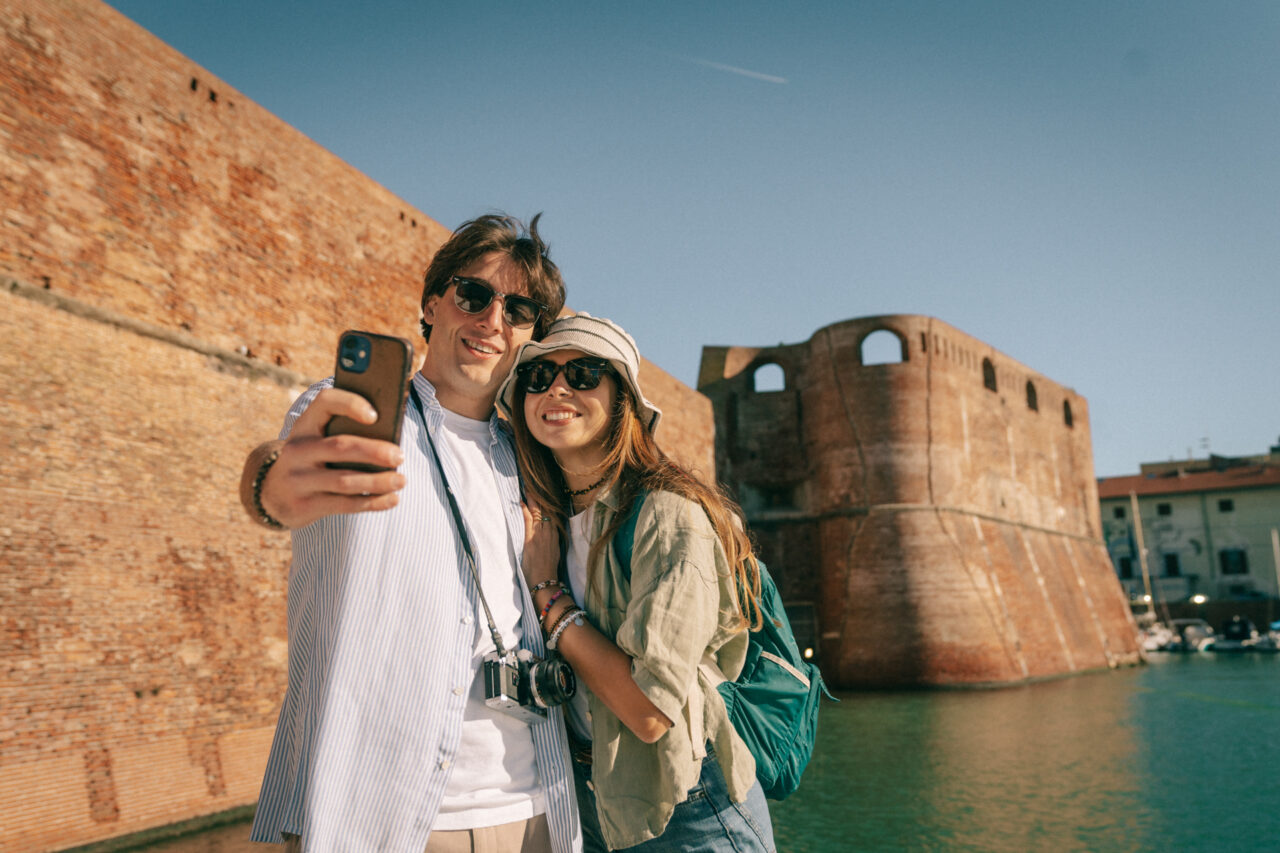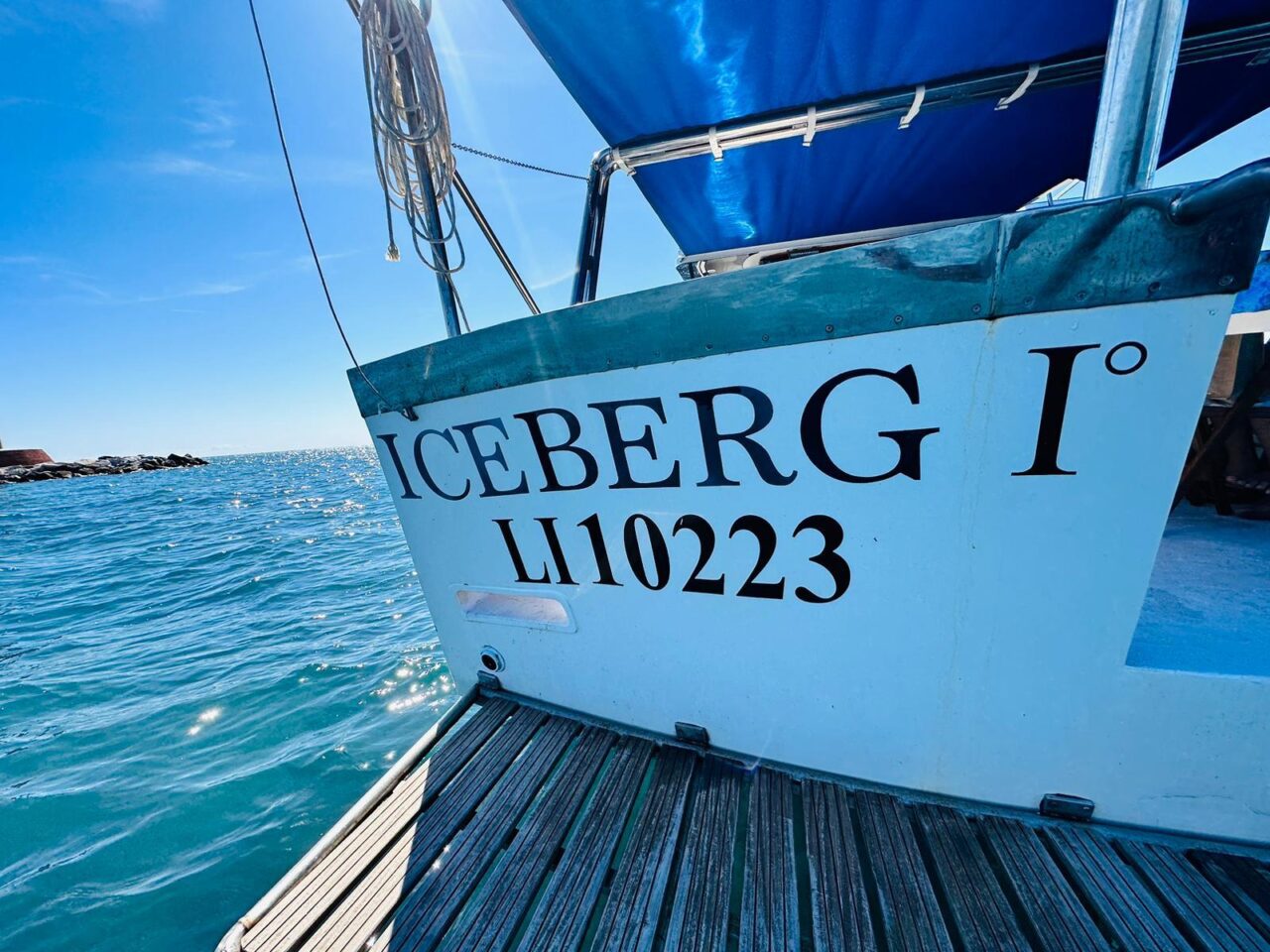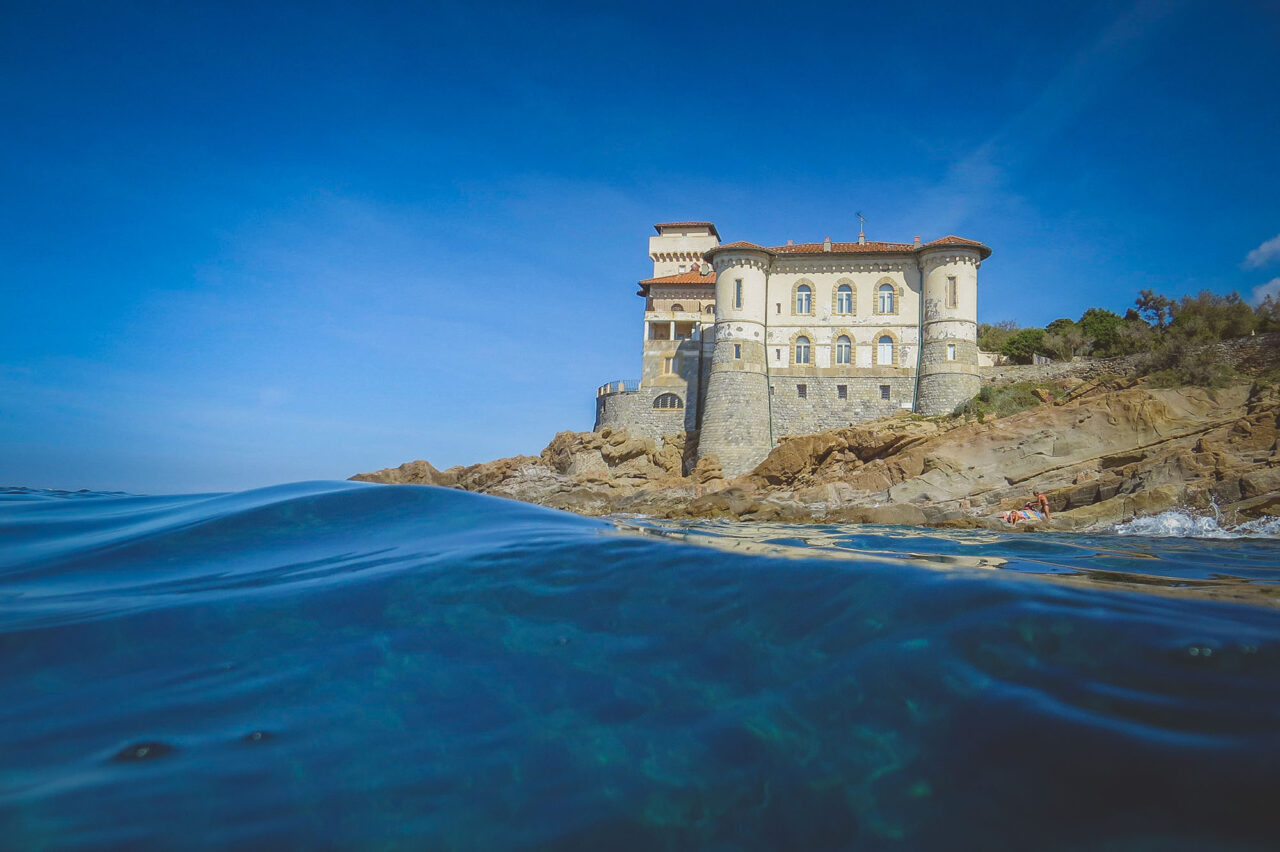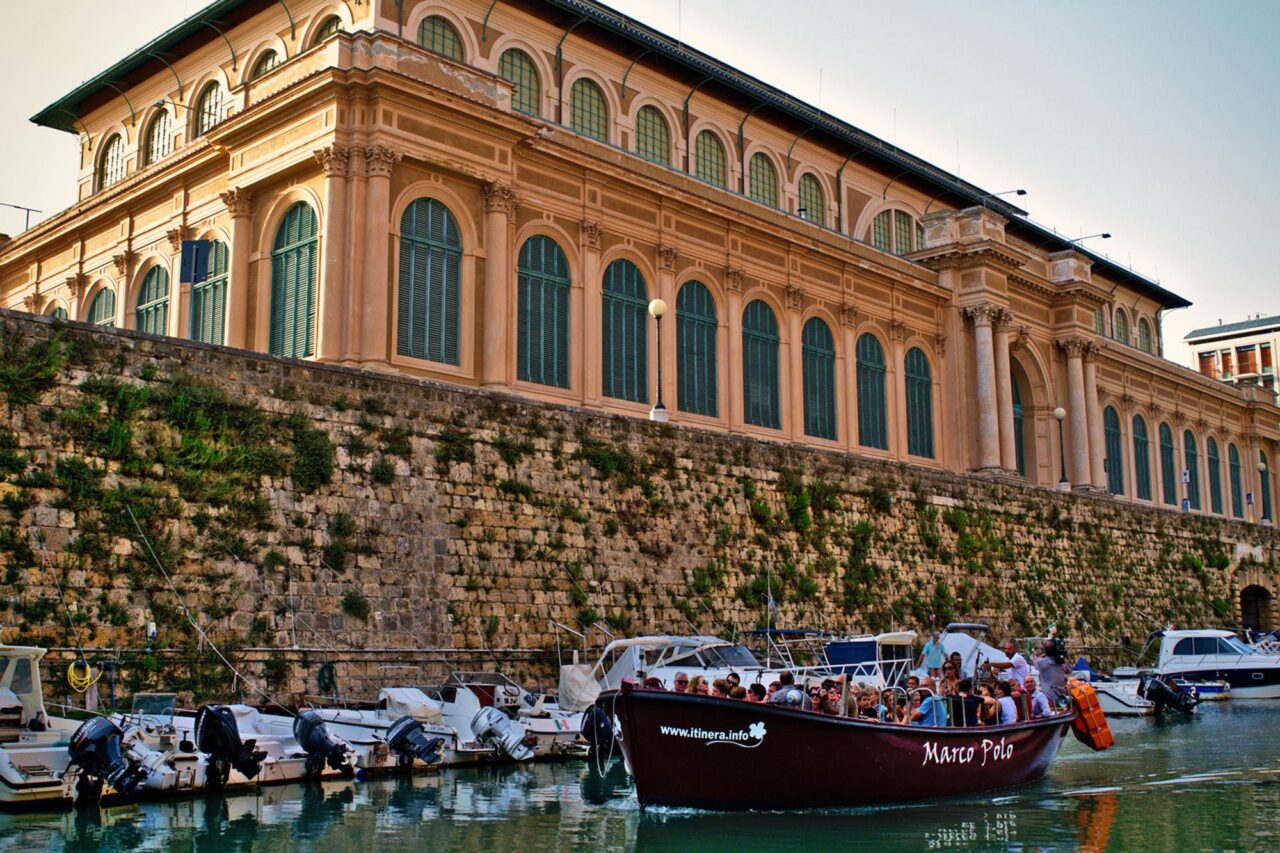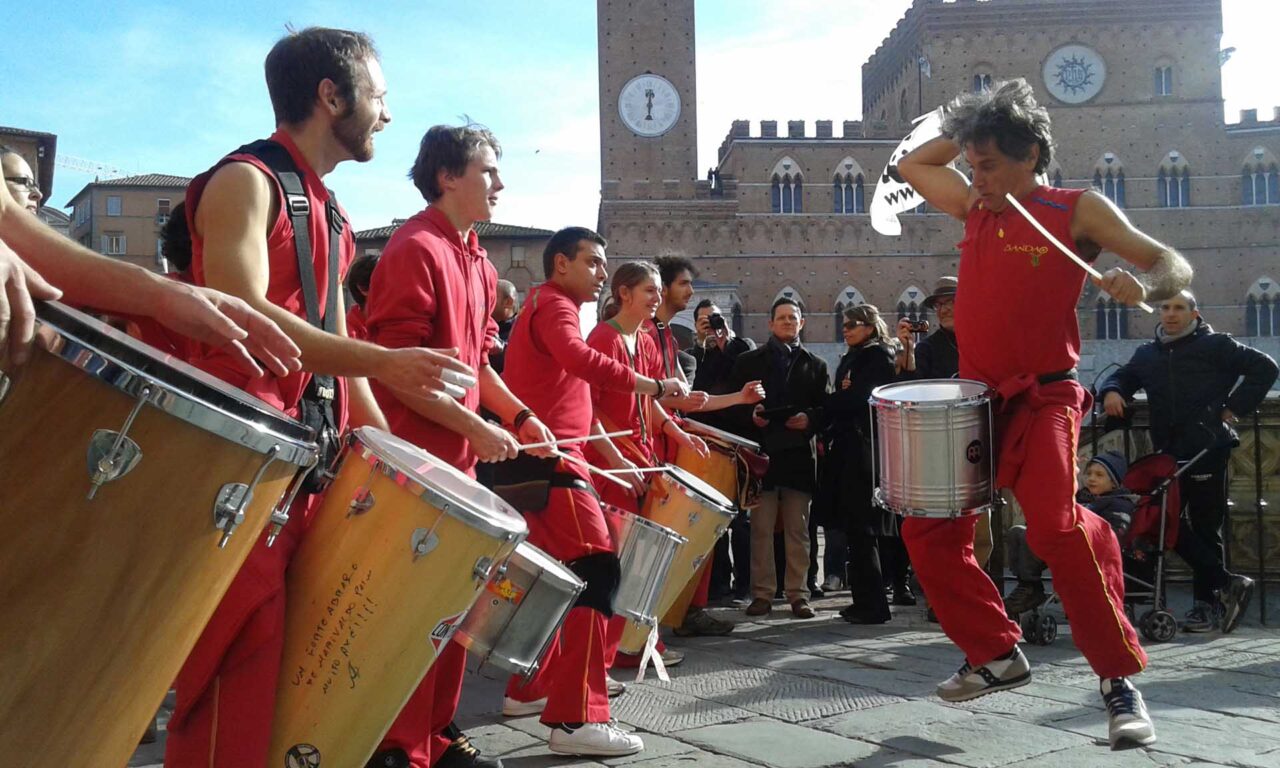Discovering an ancient defensive system
The coastal area of Livorno, including the islands of Capraia and Gorgona, was once protected by an organized system of towers, some used for spotting and signaling the frequent raids of Barbary pirates, while others were erected to warn ships of the presence of reefs and shoals.
Among the still intact towers in Livorno, in addition to the Maggiore Lighthouse and the Mastio of Matilde della Fortezza Vecchia, are the beautiful Torre del Marzocco, now incorporated into the industrial port, the Torre di Calafuria, which dominates the coastline south of the city, and the Torre della Meloria, which emerges in the middle of the sea from the homonymous shoals. Others have been lost, absorbed by fortifications and castles like those of Antignano, Boccale, and Sonnino, or destroyed by time and war, like the medieval Torre dell’Ardenza, Torre del Magnale, and Torre Maltarchiata, of which only a few ruins remain.
The island of Capraia, in addition to the imposing Forte San Giorgio, still maintains four well-preserved towers: the Torre del Porto, the delightful Torretta del Bagno on the eastern side of the island, the Torre della Regina on the western side, and the Torre dello Zenobito, which dominates the enchanting Cala Rossa.
Also beautiful and suggestive is the Torre Vecchia on the Island of Gorgona, a fortified structure built by the Pisans in the 13th century that contrasts with the New Tower, built in the second half of the 17th century by the Medici.
The mysteries of the beautiful Torre del Marzocco
Elegant and slender, the Torre del Marzocco is the first major work carried out by the Florentine Republic in Livorno after acquiring dominion from the Genoese in 1421. Although it represents the first landmark of such an important event, the exact date of construction is not known, probably taking place around the mid-15th century, nor the designer who conceived it. Initially attributed to Filippo Brunelleschi, then to Lorenzo Ghiberti, it has recently been suggested that the design of the tower is the work of Leon Battista Alberti. What remains is that the Torre del Marzocco is a tower of rare beauty, a masterpiece of seven floors characterized by a tall 54-meter high cylindrical structure with an octagonal plan, entirely covered in white marble from the Monti Pisani. On the eight faces are carved in bas-relief the names of as many winds, and under the arches of the last floor’s beccatelli, the four Florentine emblems. The Tower owes its name to the “Marzocco,” the rampant lion of the Republic of Florence that was depicted on a bronze weathervane at the top of the spire, which was lost in the 18th century due to a lightning strike. In the 16th century, Duke Alessandro de’ Medici equipped it with a military fortress, which proved crucial during the siege of 1496 and during the defense against Austrian attacks in 1849. With the expansion of the New Industrial Port, the tower, once surrounded by the sea, is now incorporated into the port infrastructure, making it unfortunately difficult to reach and visit.
The Tower of Meloria, a jewel in the middle of the sea
The Tower of Meloria, located near the homonymous shoals about seven kilometers from the port of Livorno, has a rich and complex history dating back to the twelfth century. Built by the Maritime Republic of Pisa around the twelfth century as a signaling point against pirate raids and to warn of dangerous emerging reefs, the tower has witnessed numerous shipwrecks since Roman times, so much so that its depths still hide wrecks of military and civilian ships. Destroyed by the Genoese in 1284 during the Battle of Meloria, the tower was rebuilt several times. The current structure, 15 meters high, stands on four pillars with ogival arches, designed to reduce the impact of the waves. Despite periods of abandonment, the tower was restored and consolidated in 1986, preserving its ancient splendor. The area surrounding the tower, extending over 9000 hectares, was designated in 2009 as a Marine Protected Area, also recognized as an underwater archaeological site. In 1722, in the depths near the tower, four bronze heads from the late Renaissance period were found: the Bronzi della Meloria. Depicting Homer, Sophocles, Aeschylus, and a fourth of unknown identity, the sculptures are now preserved at the National Archaeological Museum of Florence.
The Calafuria Tower, a stronghold on the coast of Livorno
The Calafuria Tower stands majestically along the picturesque stretch of coast between Antignano and Quercianella. This ancient lookout post, dating back to the 16th century, was a fundamental piece of Livorno’s vast defensive system. Its strategic position allowed communication with other towers through a chain of fire signals that reached the city. The architecture of the tower is decidedly imposing: about 20 meters high, with a square plan with sides of almost 8 meters, it is supported by a large sloping base that housed a rainwater cistern. The entrance to the tower is on the first floor, reachable through a masonry staircase that leads to the two main floors and the attic, once used for surveillance and as quarters for the garrison. The upper balcony, which surrounds all four sides, rests on arches supported by limestone brackets that now permanently host a rare colony of pallid swifts, a protected species of birds that usually build their nests on flat surfaces, while on the Calafuria tower they have chosen to build them attached to the wall.
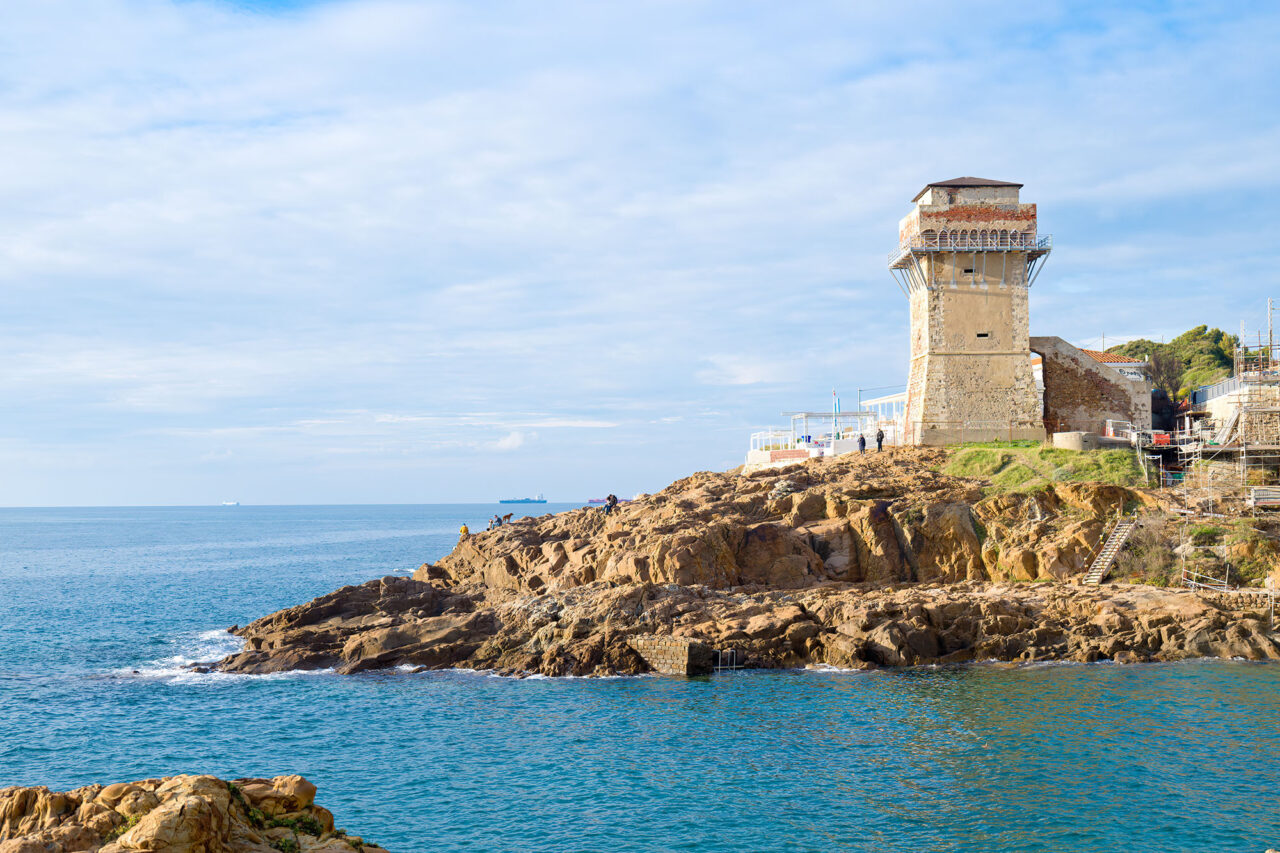
Useful informations
-
Who:
Alone, Children and families, Groups, In pairs, With friends
-
When:
Autumn, Spring, Summer, Winter
-
What:
See learn and discover
-
Other characteristics
Free, Outdoors, Without reservation

The unexpected Tuscany
Discover all the peculiarities that make Livorno so unique and surprising.
Discover more
Subscribe to the newsletter
to stay updated
Don't miss any news about events in Livorno and surroundings.

